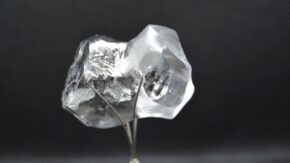Stomping out unfounded claims and misused terms is a monumental task when it comes to corporate social responsibility (CSR) in the jewelry world, but it’s an important one. Leaving it undone can mislead consumers and prompt purchases of misrepresented products.
The seriousness of the issue comes through in research from the European Commission, which found in 2020 that 53% of green claims gave vague, misleading or unfounded information, 40% of claims had no supporting evidence, and half of all green labels offered weak or nonexistent verification. In addition, the trade body reported, the European Union is home to 230 sustainability labels and 100 green energy labels, all with vastly different levels of transparency.
“Consumers today are looking for purpose and are particularly concerned with the social and environmental impact of their purchases,” says Iris Van der Veken, executive director of the Watch & Jewellery Initiative 2030 (WJI 2030), which formed in spring 2022. “It is key when claims are made that they are reliable, and that requires more than ever a strong collaboration across the value chain.”
Language matters
To combat these problems, governmental and jewelry trade groups in the US and Europe are attempting to standardize some definitions and strengthen their guidelines.
For starters, the US Federal Trade Commission (FTC) encouraged industries late last year to offer edits to its Green Guides, which aim to help marketers — in the jewelry sector and elsewhere — avoid making misleading environmental claims.
This past March, the European Commission proposed criteria for proving the claims that companies make — including having an accredited verifier check them — and “new rules on governance of environmental labeling schemes to ensure they are solid, transparent and reliable,” according to Van der Veken.
The Responsible Jewellery Council (RJC) is also making efforts to create supply-chain standards that will build trust, while the WJI 2030 is focusing on climate resilience, preserving resources and fostering inclusiveness.
On the language front, the Green Guides feedback included a request from the American Gem Trade Association (AGTA) to ban use of the term “recycling” when referring to repurposed diamonds, gemstones and precious metals, and to prohibit phrases such as “never mined” or “mining-free” in relation to such materials.
Both AGTA and the Cultured Pearl Association of America (CPAA) asked the FTC to define “sustainability” — a previously undefined term — as “meeting the needs of the present without compromising the ability of future generations to meet their own needs,” per the 1987 UN Brundtland Commission on sustainable development. The CPAA also asked that the definition include the “three pillars” from the Brundtland report — economic viability, environmental protection, and social equity.
Laying down the law
Of course, big changes can be slow to implement, but not doing so could lead to legal action. “The FTC could sue a business for failing to comply with the standards for advertising outlined in the FTC Act [that gave the body its mandate],” says Sara Yood, deputy general counsel for the Jewelers Vigilance Committee (JVC). “The National Advertising Division of the Better Business Bureau also evaluates advertising claims and issues enforcement recommendations in a self-regulation process.”
For that reason and others, having standardized language and rules — and adhering to them — is in all businesses’ best interests.
Word for word
There may not be uniform definitions for a lot of green terms in jewelry, but the Gemological Institute of America (GIA) has its own interpretations of select words and phrases. Johanna Levy, its vice president of environmental, social and governance (ESG) programs, shares some of them here.
Sustainability: The practice of conducting business in a way that meets the present needs without compromising the ability of future generations to meet their own needs. This follows the UN’s 1987 definition of “sustainability.”
Ethical (ethically-sourced): Ethical sourcing focuses on promoting transparency, fair wages and safe working conditions in a way that aligns with local and international regulations and recommendations and shows respect for local communities.
Recycled: Operating in a circular way in which materials are reused or repurposed, such as when GIA experts verify jewelry items that are up for resale on eBay.
Responsible: Conducting business operations in an accountable and ethical manner.
Conflict-free: Ensuring that clear internal practices are in place so the gems GIA encounters comply with applicable laws, regulations and industry protocols, and for diamonds, the Kimberley Process.
Carbon-neutral: Achieving a net-zero carbon footprint by balancing the amount of carbon emissions released against an equivalent amount of carbon removal. At GIA, we explore projects that use automation to reduce our global footprint, and have set climate targets aligned with the Paris Climate Agreement.
RELATED READING

Main image: (left to right) Iris Van der Veken and Johanna Levy. (Dimitri Pruym Photography; Gemological Institute of America)
This article is from GIA’s Spotlight on Sustainability special report. View other articles here.
Stay up to date by signing up for our diamond and jewelry industry news and analysis.




